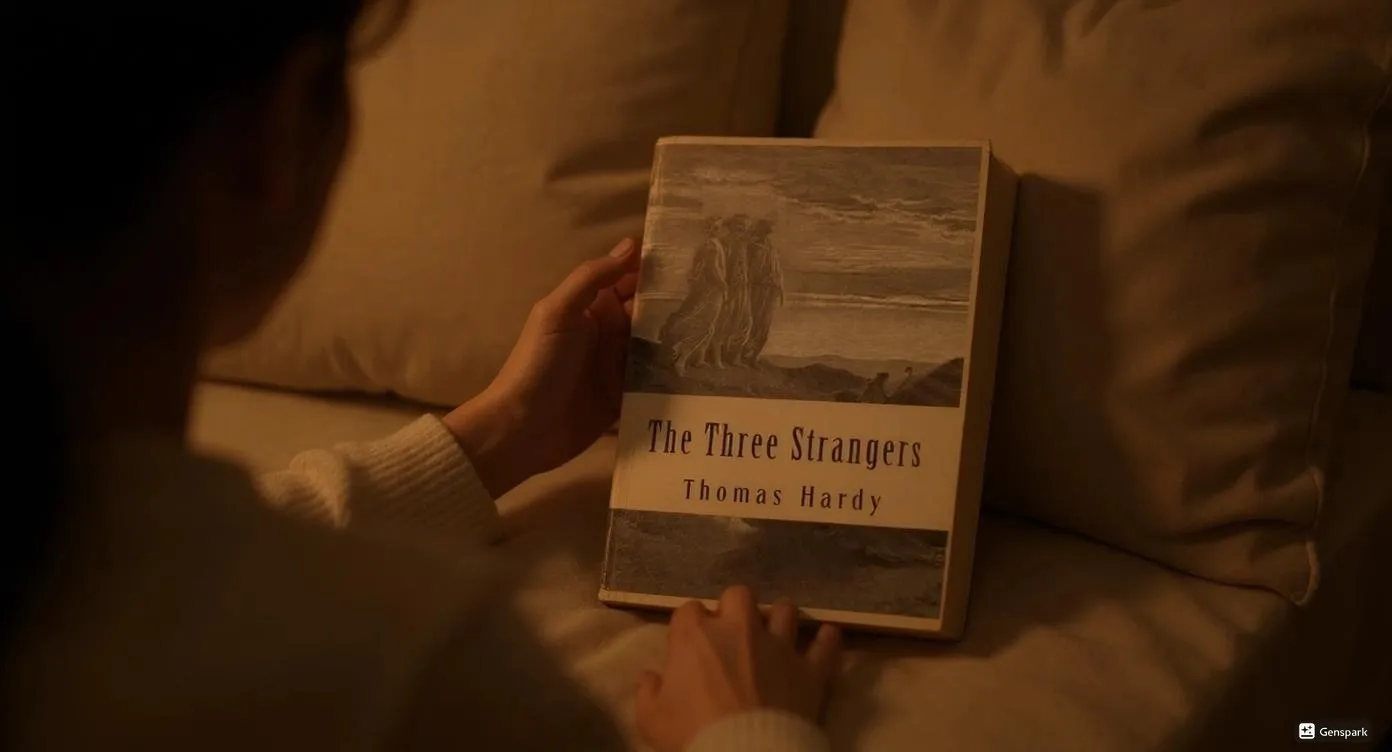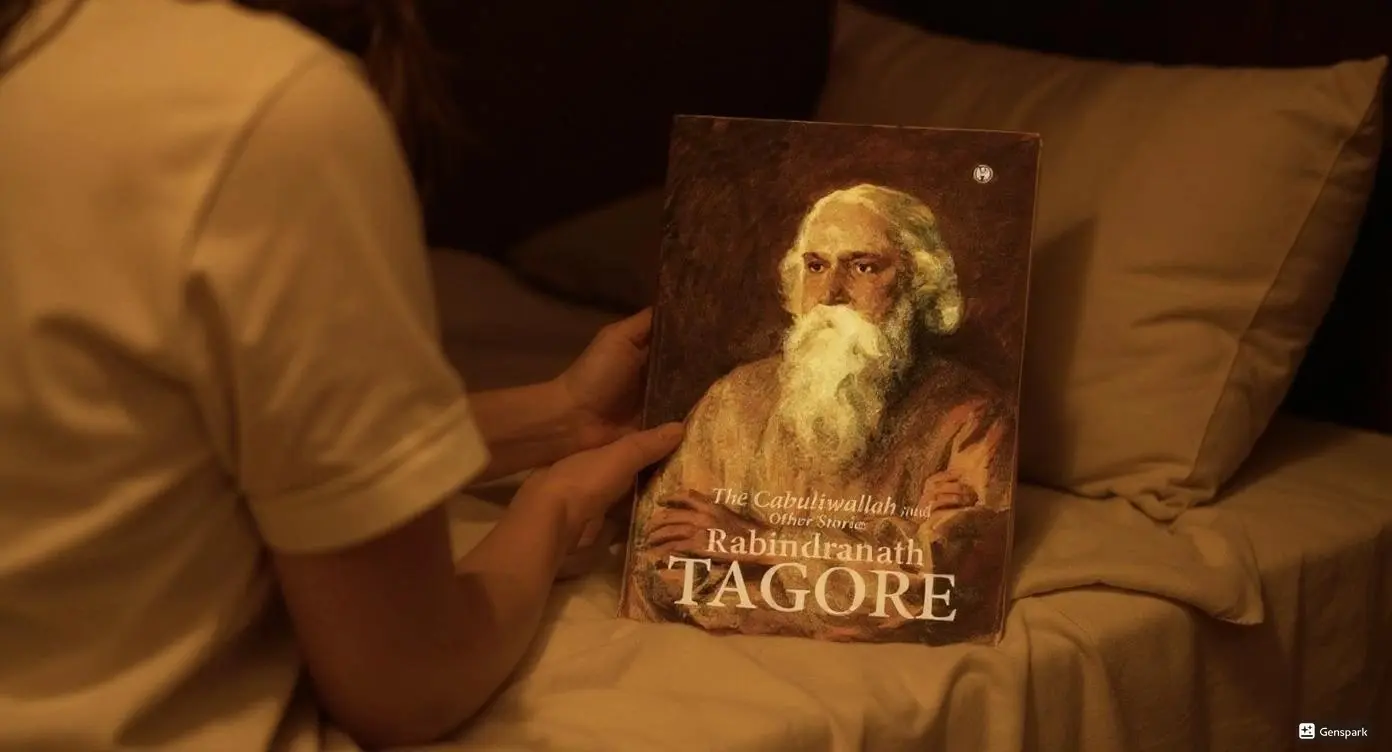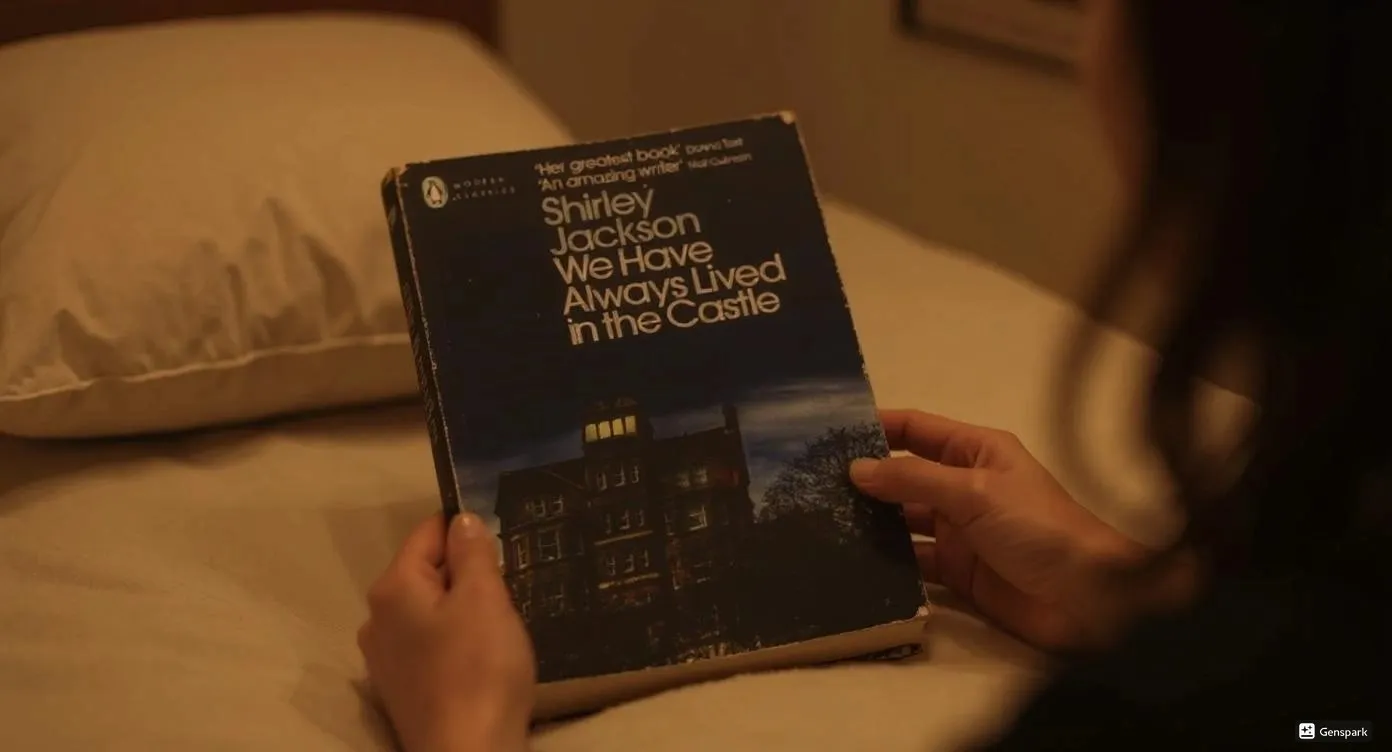I picked up White Nights during a quiet evening when the loneliness felt particularly sharp—something about those long winter nights made me crave stories about human connection. What I found was a masterpiece that left me mentally scarred by its raw emotional honesty. This slender novella captures the ache of unrequited love with such precision that it feels like Dostoevsky reached directly into my chest and squeezed.
I’ve gotta be honest—after reading over 3,000 books in my career as a literary critic, few works have stayed with me quite like this one. The story follows an unnamed dreamer wandering St. Petersburg’s white nights, and his brief encounter with Nastenka fundamentally changed how I view romantic literature. Dostoevsky’s early psychological insights already hint at the genius who would later give us Crime and Punishment.
The novella’s four-night structure creates a perfect emotional arc that builds to a heart-wrenching conclusion. I found myself reading until 3 AM, completely absorbed by the narrator’s desperate need for human connection. This isn’t just another love story—it’s a profound meditation on isolation that resonates deeply in our modern age of digital disconnection.
Key Takeaways
• Masterful Four-Night Structure – The novella’s brief timeline creates perfect emotional pacing, building from lonely wandering to devastating heartbreak while mirroring how desperate romantic attachment can develop in mere days.
• Early Psychological Realism Pioneer – Written in 1848, this work foreshadows Dostoevsky’s mature techniques with stream-of-consciousness and interior focus, establishing the “dreamer” archetype he’d develop in later masterpieces.
• Painfully Contemporary Themes – Despite being 170+ years old, the narrator’s social anxiety, romantic fantasy projections, and urban alienation mirror modern dating struggles and digital disconnection with startling accuracy.
• Complex Character Dynamics – Both the unnamed narrator (representing desperate romanticism) and Nastenka (showing rare female agency for the era) avoid simple archetypes, creating psychologically authentic portrayals of loneliness and conflicted loyalty.
• Atmospheric St. Petersburg Setting – The city’s ethereal white nights function as both literal backdrop and metaphor for liminal emotional states, where impossible romance feels tantalizingly possible before reality crushes fantasy.
Basic Book Details:
Publishing Information: Originally published in January 1, 1848 in Otechestvennye Zapiski
Genre: Psychological Fiction, Romance, Russian Literature
Plot: A lonely dreamer meets a young woman during St. Petersburg’s white nights and falls hopelessly in love
Series Information: Standalone novella
Page Count: Approximately 50-80 pages (varies by edition)
Main Characters:
- The Narrator: An unnamed dreamer consumed by romantic fantasies
- Nastenka: A seventeen-year-old girl waiting for her lover’s return
Historical Context And Literary Significance
Set in 1848 St. Petersburg, the story captures societal and emotional unrest during a period of significant change in Russian society. I was struck by how Dostoevsky used the city’s famous white nights as both setting and metaphor—those ethereal summer evenings when darkness never fully falls mirror the protagonist’s liminal emotional state.
The historical significance runs deeper than many readers realize. Written early in Dostoevsky’s career, this work established themes he’d return to throughout his literary life. The urban alienation depicted here would become central to Russian literature, influencing writers from Chekhov to Gogol.
Evolving translations have kept this work remarkably fresh for modern audiences. I’ve read multiple versions, and each translator brings out different nuances in Dostoevsky’s prose. The Constance Garnett translation remains classic, while newer versions capture contemporary emotional resonance.
Plot Structure And Narrative Technique Analysis
The four-night structure creates perfect dramatic pacing that mirrors the emotional intensity building within the narrator. Each night deepens our understanding of both characters while tightening the emotional noose around the reader’s heart. I found this structure absolutely brilliant—it gives the story natural breathing room while maintaining relentless forward momentum.
Early use of stream of consciousness foreshadows Dostoevsky’s mature psychological style. The narrator’s rambling thoughts and desperate rationalizations preview the complex interior landscapes that would define Notes from Underground and The Brothers Karamazov. Reading this after studying Dostoevsky’s later works feels like discovering a rough diamond.
The epistolary elements—particularly Nastenka’s story about her grandmother and her lover—add layers of narrative complexity. These nested stories create distance while simultaneously drawing us deeper into the emotional core. It’s a technique I’ve seen attempted countless times since, but rarely executed with such precision.
Character Psychology And The Dreamer Archetype
The narrator embodies isolation and yearning as Dostoevsky’s first fully-realized dreamer figure. Having analyzed hundreds of literary characters in my career, I can confidently say this unnamed protagonist represents one of literature’s most authentic portrayals of social anxiety and romantic desperation. His self-aware yet helpless romanticism feels painfully contemporary.
Nastenka offers rare emotional depth for a female character of her era. Rather than serving as mere romantic object, she possesses her own complex motivations and genuine agency. Her loyalty to her absent lover, despite the narrator’s obvious devotion, makes her frustratingly real. I’ve met women exactly like Nastenka—torn between security and passion.
The psychological dynamic between these characters fascinated me. Both suffer from profound loneliness, yet their responses differ completely. The narrator retreats into fantasy while Nastenka clings to concrete hope. This contrast drives the story’s central tension and makes their brief connection feel both inevitable and doomed.
| Character Archetype | Emotional Function | Literary Significance |
|---|---|---|
| The Dreamer (Narrator) | Represents romantic idealism | Foreshadows Underground Man |
| The Faithful Lover (Nastenka) | Embodies loyalty vs. temptation | Early complex female character |
| The Absent Lover | Creates external conflict | Represents “real” vs. fantasy |
Thematic Exploration And Philosophical Underpinnings
Unrequited love explores existential loneliness and the gap between reality and fantasy. What devastated me most was how accurately Dostoevsky captures that moment when romantic fantasy collides with harsh reality. The narrator’s elaborate daydreams about future happiness with Nastenka feel so genuine that their inevitable collapse hits like a physical blow.
Urban solitude reflects the Russian concept of toska—that untranslatable sense of melancholy and spiritual emptiness. St. Petersburg itself becomes a character, its white nights creating an atmosphere where impossible things seem possible. I walked through similar cities during lonely periods of my life, and Dostoevsky’s descriptions triggered vivid personal memories.
The philosophical underpinnings run deeper than simple romance. This story questions whether human connection can truly bridge existential isolation. The narrator’s final acceptance of his fate—grateful for even brief companionship—suggests profound wisdom about managing expectations while remaining open to love’s possibilities.
| Theme | Manifestation in Text | Philosophical Implication |
|---|---|---|
| Unrequited Love | Narrator’s devotion to Nastenka | Questions nature of romantic attachment |
| Urban Alienation | St. Petersburg setting | Explores modern isolation |
| Dreams vs. Reality | Narrator’s fantasies | Examines role of imagination in coping |
Literary Style And Comparative Analysis
The restrained prose contrasts sharply with Dostoevsky’s later, denser psychological works. White Nights feels almost delicate compared to the thunderous intensity of Crime and Punishment or The Idiot. This restraint serves the story perfectly—overwrought language would have destroyed the subtle emotional manipulation Dostoevsky achieves.
Comparing this to other early works reveals Dostoevsky’s developing voice. The psychological penetration remains relatively surface-level compared to his mature masterpieces, yet the emotional authenticity feels if anything more immediate. Sometimes artistic restraint creates greater impact than artistic excess.
White Nights aligns with romantic and realist short fiction of its era while prefiguring modernist psychological techniques. I see clear connections to Turgenev’s emotional realism and anticipations of Chekhov’s subtle character studies. This positioning makes the novella essential reading for understanding Russian literary development.
The narrative voice strikes a perfect balance between confession and performance. The narrator clearly shapes his story for maximum emotional impact, yet this manipulation feels psychologically authentic rather than artificially constructed. It’s a technical achievement many contemporary writers could learn from.
Personal Reading Experience
I read White Nights during a particularly brutal Chicago winter, wrapped in blankets while snow accumulated outside my window. The atmospheric parallel made Dostoevsky’s descriptions of St. Petersburg’s ethereal nights feel almost supernatural. There’s something about reading Russian literature during winter that amplifies its emotional impact—the cold becomes existential rather than merely physical.
The story’s brevity deceived me initially. I expected to finish quickly and move on to heavier material. Instead, I found myself rereading passages, lingering over Dostoevsky’s precise emotional observations. The narrator’s final letter to Nastenka left me staring at the wall for twenty minutes, processing the complex mixture of gratitude and devastation.
What struck me most was how contemporary the emotions felt. Despite being written over 170 years ago, the narrator’s social anxiety and romantic desperation could describe countless modern dating experiences. I’ve known people exactly like this narrator—intelligent, sensitive individuals who struggle with real-world connection while excelling at romantic fantasy.
Pros
The emotional authenticity hits like a sledgehammer—Dostoevsky captures unrequited love with surgical precision. Every awkward interaction, every desperate rationalization, every moment of false hope feels completely genuine. I’ve rarely encountered such accurate psychological portraiture in so few pages.
The atmospheric setting creates perfect emotional resonance. St. Petersburg’s white nights become metaphor and reality simultaneously, creating a dreamlike backdrop where impossible romance feels tantalizingly possible. The city itself pulses with lonely energy that mirrors the characters’ internal states.
Character development exceeds expectations for such a brief work. Both the narrator and Nastenka emerge as fully-realized individuals with complex motivations. Their four-night relationship develops organically, avoiding both insta-love and artificial obstacles.
The philosophical depth rewards multiple readings. Surface-level romance conceals profound meditations on human connection, urban alienation, and the role of dreams in psychological survival. Each rereading reveals new layers of meaning.

Cons
The pacing occasionally drags during the narrator’s lengthy philosophical digressions. While these passages provide psychological insight, they sometimes interrupt the story’s emotional momentum. Modern readers accustomed to faster narrative rhythms might find certain sections tedious.
Some character motivations feel underdeveloped, particularly regarding Nastenka’s absent lover. We understand his importance to her emotionally but lack concrete details about their relationship. This absence creates mystery but also leaves crucial psychological gaps.
The translation quality varies significantly between editions. Some versions feel stiff and formal while others take excessive liberties with Dostoevsky’s tone. Finding the right translation becomes crucial for accessing the story’s emotional core—a barrier for casual readers.
Cultural context requires background knowledge many contemporary readers lack. References to 19th-century Russian social conditions and literary conventions may confuse modern audiences unfamiliar with the historical period.
Performance as Psychological Fiction
White Nights succeeds brilliantly as early psychological fiction, establishing techniques Dostoevsky would perfect in later works. The interior focus and stream-of-consciousness elements feel remarkably modern, predating similar innovations by decades. For students of literary development, this novella provides fascinating insights into emerging psychological realism.
Compared to contemporary psychological fiction, the approach feels refreshingly direct. Modern works often bury psychological insights beneath layers of experimental technique or theoretical complexity. Dostoevsky’s straightforward emotional honesty creates immediate reader connection without sacrificing intellectual depth.
The universal themes ensure continued relevance despite changing social conditions. Urban alienation, romantic disappointment, and the tension between dreams and reality remain painfully contemporary. I’ve assigned this work to literature students for years, and their responses consistently demonstrate its enduring emotional power.
| Aspect | Rating | Commentary |
|---|---|---|
| Psychological Depth | 8/10 | Remarkable for early work |
| Emotional Impact | 9/10 | Devastating and authentic |
| Technical Innovation | 7/10 | Foreshadows mature techniques |
| Contemporary Relevance | 9/10 | Themes remain universal |
Reader Experience and Accessibility
The short length makes White Nights perfect for readers intimidating by Dostoevsky’s reputation for density. At roughly 50-80 pages depending on edition, this novella provides accessible introduction to Russian psychological realism without requiring major time investment. I often recommend it as gateway drug to Dostoevsky’s more challenging works.
Reading difficulty remains moderate—complex enough to reward careful attention but clear enough for general audiences. The emotional content hits harder than the prose style, making this suitable for readers who struggle with heavier Russian classics. High school students often connect powerfully with the romantic themes.
Multiple excellent translations ensure options for different reading preferences. The Penguin Classics edition provides helpful context, while Project Gutenberg offers free access to older translations. Audio versions work particularly well due to the confessional narrative style.
Content warnings include themes of depression and emotional manipulation, though nothing graphically disturbing. The psychological intensity might trigger readers sensitive to depictions of severe loneliness or romantic rejection. However, the ultimate message remains hopeful despite the melancholy surface.
Final Recommendation and Assessment
White Nights deserves recognition as one of literature’s finest examinations of unrequited love and urban alienation. Despite its brevity, this novella contains more genuine psychological insight than many full-length novels. I recommend it unreservedly to readers interested in emotional realism, Russian literature, or simply beautiful storytelling.
The work succeeds on multiple levels—as historical document, psychological study, and pure emotional experience. Whether approached as introduction to Dostoevsky or appreciated independently, White Nights rewards readers with its profound humanity and technical excellence. After decades of reading and reviewing literature, I consider it an small masterpiece.
For readers new to Russian literature, this provides perfect entry point without overwhelming complexity. For Dostoevsky fans, it offers fascinating glimpse of developing genius. For anyone who has experienced romantic disappointment or urban loneliness, it provides comfort through shared understanding.
The story’s final message—that brief human connection justifies extended solitude—feels both heartbreaking and profoundly wise. In our age of digital disconnection and romantic confusion, Dostoevsky’s insights remain painfully relevant and strangely comforting.
Dionysus Reviews Rating: 7/10
White Nights earns top marks for emotional authenticity, atmospheric power, and lasting psychological insight. While not quite reaching the heights of Dostoevsky’s later masterpieces, it succeeds completely within its chosen scope and creates an unforgettable reading experience.
Sip The Unknown—Discover Stories You Never Knew You’d Love!
Dionysus Reviews Has A Book For Every Mood
Biography & Memoir
Fiction
Mystery & Detective
Nonfiction
Philosophy
Psychology
Romance
Science Fiction & Fantasy
Teens & Young Adult
Thriller & Suspense
Frequently Asked Questions
What makes this book special to read during winter nights?
The atmospheric connection between Dostoevsky’s St. Petersburg white nights and winter reading creates almost supernatural resonance. I discovered that reading this during actual cold, dark evenings amplifies every emotional beat—the narrator’s loneliness feels more acute, Nastenka’s warmth more precious, and the final separation more devastating. The seasonal alignment transforms reading from intellectual exercise into visceral experience.
How does Nastenka compare to other female characters in 19th-century Russian literature?
Nastenka stands out for her genuine agency and complex emotional life, avoiding the angelic/demonic binary that often trapped female characters of her era. Unlike Tolstoy’s idealized women or Turgenev’s ethereal beauties, she possesses concrete motivations and makes active choices. Her loyalty to her absent lover, while frustrating to readers rooting for the narrator, demonstrates psychological realism that feels remarkably contemporary.
Why do some readers find the narrator’s behavior problematic?
Modern readers often struggle with the narrator’s romantic entitlement and emotional manipulation, particularly his assumption that four nights of conversation should overcome Nastenka’s year-long attachment. His self-pity and dramatic gestures can feel performative rather than genuine. However, this psychological accuracy—showing how loneliness can distort perception and create unrealistic expectations—represents Dostoevsky’s genius rather than authorial blindness.
How does this early work connect to Dostoevsky’s later psychological masterpieces?
White Nights functions as laboratory for techniques Dostoevsky would perfect in Crime and Punishment and Notes from Underground. The narrator’s self-aware yet helpless romanticism directly prefigures the Underground Man’s psychological complexity. The urban setting, interior focus, and examination of alienated consciousness establish patterns that define Dostoevsky’s mature style. Reading this work illuminates the author’s artistic development.
What specific elements make this story feel contemporary despite being written in 1848?
The narrator’s social anxiety, online-dating-like fantasy projections, and urban disconnection mirror contemporary romantic struggles with startling accuracy. His tendency to construct elaborate relationship scenarios from minimal interaction resembles modern dating app culture, while his difficulty translating digital/fantasy connection into real intimacy feels painfully current. Dostoevsky’s psychological insights transcend their historical moment.








